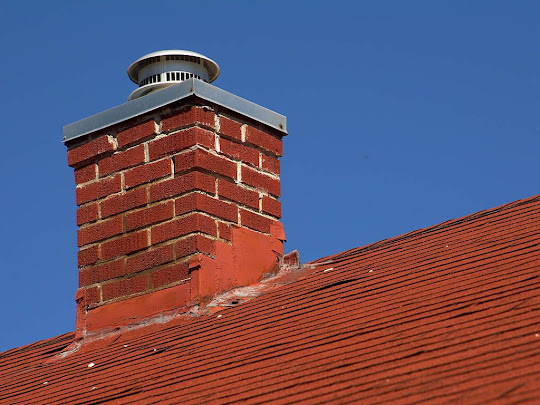How to Get Rid of a Fireplace Smell?
Have you recently discovered a smell coming from your fireplace? As we all know, a stinking fireplace is an everyday occurrence in both the summer and the winter. There are multiple causes for the smell coming from your fireplace. Fortunately, we can assist you in identifying the potential cause and figuring out the best way to eliminate the odor right away!
How is Fireplace smell caused?
How to Get Rid of Fireplace Smells?
You can go with simple to a bit time-consuming step and also take the help of professionals for this. Let us have a look at the steps as under:
- Clean the Fireplace
To keep the fireplace safe and free of odors, it must be cleaned. Start by removing any ash, debris, and creosote accumulation. To remove any remaining residue, use a brush and a fireplace shovel to remove the ash. Be especially mindful of any small spaces where material could collect. To ensure sufficient airflow while preventing any possible fire threat, be mindful in eliminating any leftovers. To protect yourself from dust and soot, think about wearing a mask and gloves. After cleaning, make sure to properly dispose of any debris and get set to perform more maintenance to keep your fireplace operating effortlessly and smelling good.
- Inspect the Chimney
It’s essential to inspect the chimney to guarantee sufficient airflow and avoid a smelly fireplace. Start by seeking out leaks or obstructions. Examine the interior carefully with a flashlight, searching for nests, garbage, or damage indications like cracks or missing masonry. If there are any problems, take quick action to keep smoke and odors out of your house. Remove any obstacles that may exist and fix any damage as necessary. Frequent chimney inspections reduce the risk of chimney fires and ensure a clean, odor-free atmosphere in your home by maintaining a safe and effective fireplace.
- Check the Damper
To guarantee appropriate ventilation while preventing bad odors, it is imperative to inspect the damper. Make sure the damper is fully open to provide sufficient ventilation. Unpleasant aromas in your house may result from a closed damper capturing smells inside the chimney and fireplace. Carefully open the damper to its highest level extent if it is closed. Odor risks are reduced and effective fireplace performance is guaranteed with routine damper inspections and maintenance. When you keep the damper open when using your fireplace, you promote good ventilation and help keep your house looking neat and attractive.
- Clean the Grate and Tools
Regular cleaning of the grate and tools is necessary to preserve the fireplace looking clean. Using a wire brush, begin by cleaning both of them of any soot or residue. Eliminate buildup by giving all areas meticulous care. After the soot has been removed, use a moist towel to clean and remove any remaining residue from the grate and equipment. This maintains your fireplace looking clean and organized while also guaranteeing smooth operation and halting the development of smells from deposited soot. Keeping your home’s fireplace clean and well-maintained requires routine cleaning of the grate and its accessories.
- Use Baking Soda
One natural deodorizer that works well for fireplace scents is baking soda. Cover the damaged areas of the fireplace with an extensive coating of baking soda. To maximize the baking soda’s capacity to absorb odors, let it rest undisturbed for a long time—ideally overnight or for a few days. The baking soda reduces and gets rid of offensive odors throughout this period. Once the prescribed period has passed, remove the baking soda and any collected smells using a brush. This easy-to-use yet powerful technique leaves your home feeling clean and welcoming while revitalizing your fireplace without the need for harmful substances.
- Inspecting the flue
Maintaining enough ventilation and avoiding odors requires routine flue inspection. Examine the flue closely with a flashlight, looking for debris, nests, or creosote buildup. Eliminating any obstacles encourages the maximum possible airflow, which reduces the danger of chimney fires and enhances fireplace efficiency. Frequent flue inspections maintain the safety of your house and cultivate a comfortable environment. Include it in your routine fireplace maintenance to guarantee continued enjoyment and get rid of unwanted odors. Setting this chore as a top priority helps maintain a tidy and welcoming living area where you are able to relax in front of a cozy fire without thinking about anything.
- Schedule a Professional Inspection
For optimal ventilation to be maintained and odors to be avoided, flue inspection is necessary. With a flashlight, carefully inspect the flue, in search of debris, nests, or creosote accumulation. Avoiding obstructions guarantees the best possible airflow, lowering the danger of chimney fires and improving fireplace performance. Maintaining an atmosphere that is welcoming and warm in your house is made possible by routine flue inspections. Use it in your regular fireplace maintenance to ensure that you can continue to enjoy it and get rid of any not wanted odors. Making this activity a priority helps maintain an organized and welcoming living area where you may unwind in peace in front of the fire.
.jpg)
.jpg)

.jpg)
Comments
Post a Comment